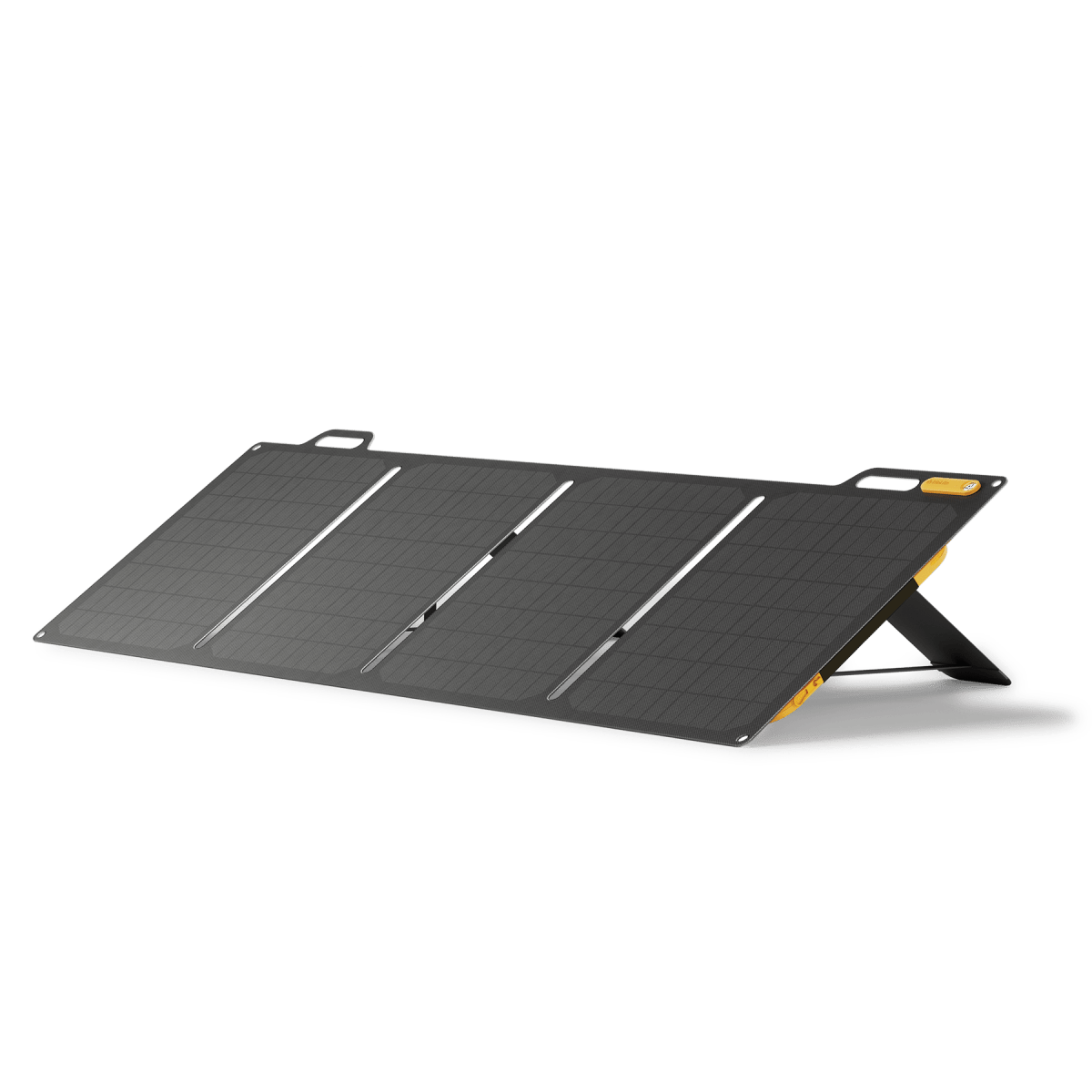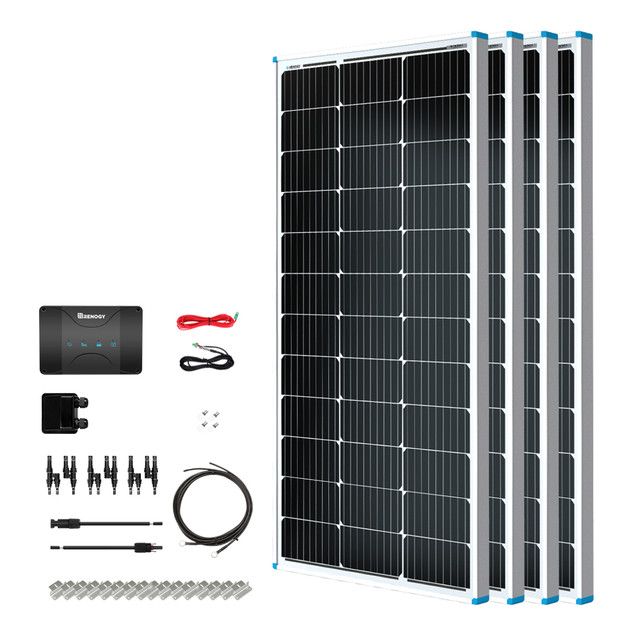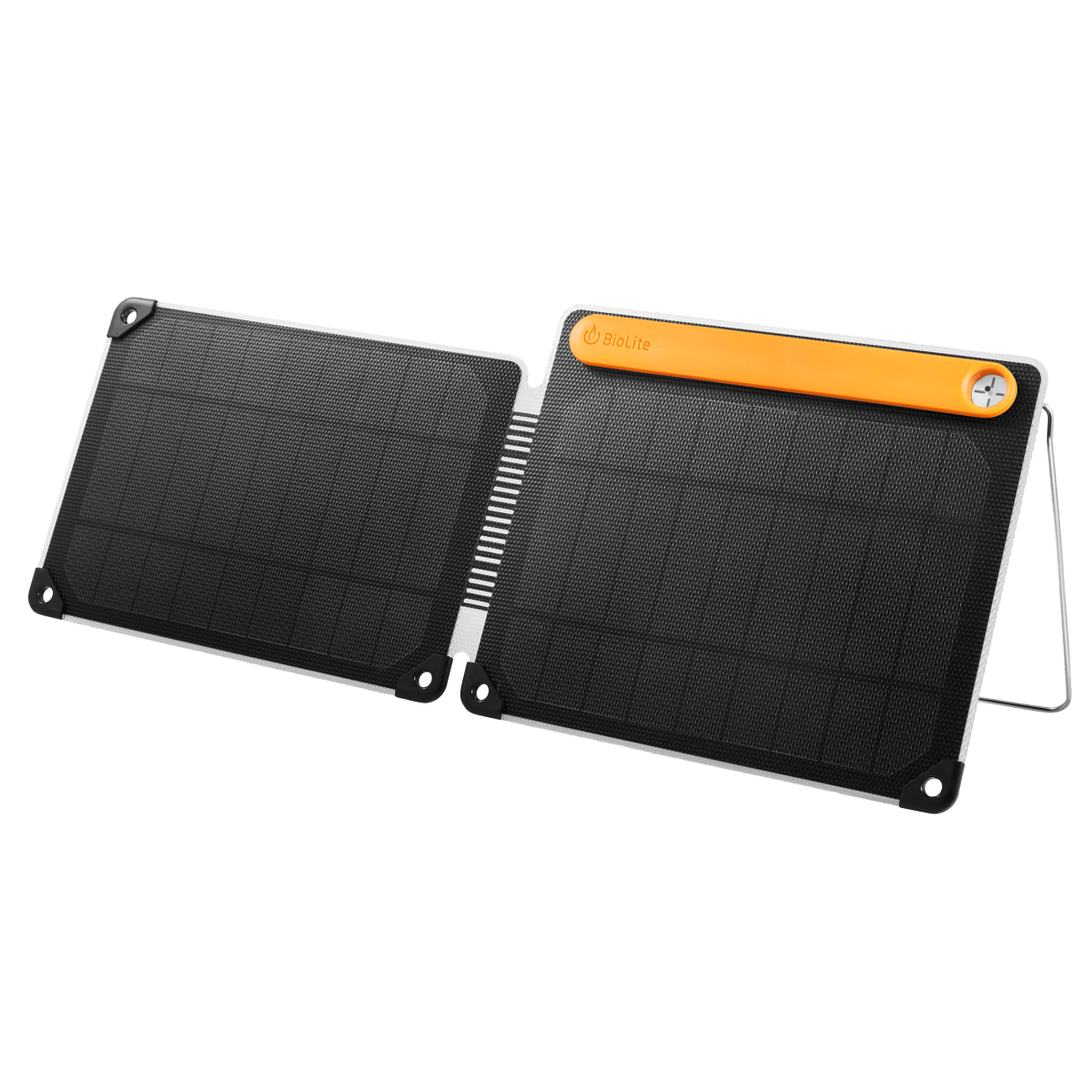Most of us are familiar with the term ‘renewable energy’ and know that it refers to using natural resources like sun and wind to create electricity to power most anything in our lives. There was a time when solar panels and wind turbines were equated exclusively with total off-the-grid living in remote locales. These days, though, solar panels and, consequently solar energy, is more widespread and accessible. There are even numerous government rebates and tax credits available for installing a solar system in your home. Some installers also offer rebates.
If you’re like me, you’re likely intrigued by the money saving possibilities of solar energy, as well as the ‘saving the planet’ benefits and the peace of mind that comes with knowing you can potentially power your home in the event that the electrical grid experiences an outage.
To help you get started and sift through all the available information and solar installers, I talked with some experts in the industry including: Randy French, owner and founder of Independent Solar, solar installers in Arizona, Nevada, and Texas; Chris Christal, director of sales at Atma Energy, a solar energy company and solar installers in Texas; James (JD) Dillon, chief marketing officer at Tigo Energy, a company that manufactures solar inverters, solar monitoring technology, and provides training and services globally for solar installers that work on residential, commercial, and industrial installations; and Steven Grant, chief operations operator at Guardian Home, a solar installation company.
Our top picks for the best solar panels
Aside from the portable options, all of the below panels would be considered best for residential applications. Where they differ is in price, power and, in some cases, how they withstand certain weather conditions.
Best solar panel for consistent performance: Silfab 420W
Find an installer
French’s company, Independent Solar, uses Silfab panels almost exclusively. They’re a North American company that manufactures their panels in Bellingham, WA. These 420-watt panels utilize an N-type silicon wafer which delivers more power and higher efficiency, as well as consistent performance when temperatures rise, improved shade tolerance and a reduction in annual degradation rates.
If you’re curious, in wafers, the ‘n’ and ‘p’ refer to either negative or positive.
Specifications:
- Wattage: 420
- Efficiency: 21.5%
- Dimensions: 67.8 x 44.6 x 1.37 inches
- Type of solar cells: 108 monocrystalline
- Temperature coefficient: -0.24%/°C
- Warranty: 25-30 years
- Durability: < 2% in first year; subsequent years, < 0.30% annual degradation
- Price on publish: About $218 per panel or 0.70 per watt before installation
What we like:
- Made in the U.S.
- Very durable
- All black design on the front looks sleek
- White backside reduces cell temperature for more efficiency
What we don’t like:
- Outsource their installers
The bottom line:
These solar panels are designed specifically for (and produced in) North America using N-type silicon wafer technology for enhanced efficiency.

BioLite 100 Watt Folding Solar Panels
Weighing only 9.5 pounds, this 100-watt panel from BioLite is extremely portable and packable. Outputs include a high power pole power station connection, one USB-C port, and two USB-A ports. The integrated analog sundial helps you find optimal positioning to take advantage of the sun’s rays and the protective back pouch keeps your cables organized and out of the sun and ports dry when it rains. Speaking of, it's weather resistant, so you don’t have to worry about it getting caught out in the rain.
Specifications
- Wattage: 100
- Efficiency: N/A
- Dimensions: 20.1 x 57.5 x 1 inches unfolded
- Type of solar cells: Monocrystalline
- Temperature coefficient: N/A
- Warranty: 1 year
- Durability: N/A
- Price on publish: $400
Pros:
- Lightweight
- Portable
- Works with power stations
Cons:
- Efficiency data not available/published
The bottom line:
Lightweight, foldable, packable, and portable 100-watt solar panel for outdoor adventures and camping.

Renology 200 Watt 12 Volt Flexible Monocrystalline Solar Panel
Each of these flexible panels from Renology weighs a mere 10.8 pounds. Waterproofed for extended outdoor use (tested in snow, wind, and rain) and bendable up to 240 degrees, they’re a great solution for boats, RVs, camper trailers, and other uneven surfaces. You can install them on a curved roof or the front cap of a fifth wheel trailer. In 5 to 6 hours of direct sunlight, one panel provides 1000 watts of electricity per day.
Specifications
- Wattage: 200
- Efficiency: 16.7%
- Dimensions: 63.2 x 29.4 x 0.1 inches
- Type of solar cells: Half-cut PERC cells monocrystalline
- Temperature coefficient: -0.29%/°C
- Warranty: 25 years
- Durability: N/A
- Price on publish: $419.99 per panel
Pros:
- Lightweight
- Installs on curved surfaces
- Pre-drilled mounting holes
The bottom line:
Lightweight, flexible 200-watt solar panel from Renology perfect for campers, RVs, and boats.

Renogy 400 Watt 12 Volt Solar RV Kit
With pre-drilled holes and plug and play cables, these solar panels from Renogy are made especially for people who have never installed solar panels on their RV before. They have lightweight aluminum frames and shatter resistant, corrosion resistant glass. This is for small to medium setups like sprinter vans and medium sized RVs. It includes a charge controller that helps you troubleshoot problems and prevent any unexpected or unscheduled short circuits. They’re also equipped with DC-DC assembly, which means they can also charge your vehicle battery.
Specifications
- Wattage: 100 per panel
- Efficiency: 22%
- Dimensions: 41.8 x 20.9 x 1.4 inches
- Type of solar cells: Monocrystalline
- Temperature coefficient: -0.28%/°C
- Warranty: 10 years
- Durability: N/A
- Price on publish: $699.99 for 4 panels
Pros:
- Easy installation
- Lightweight
- Resistant to corrosion
Cons:
- For a DIY kit, instructions are a bit lacking
The bottom line:
This solar kit for RVs comes with four 100-watt panels and a controller, making it easy for the first time solar user to install.

BioLite Solar Panel 10+
I carry one of these BioLite solar panels on all my bikepacking trips across the world. While cycling during the day, I strap it on top of the back rack on my bike so it collects power as I pedal (as long as the sun is shining, of course).
Approximately one hour of direct sunlight charges the integrated battery to full. You can also, of course, use it to power your devices or a light in real time from the sun. Equipped with a micro-USB charge in, USB charge out, integrated 3200 mAh battery, and sundial, I used it to charge both my phone and GPS bike computer on a daily basis while out in the wilderness.
Specifications
- Wattage: 10
- Efficiency: N/A
- Dimensions: 10.12 x 8.19 x 0.94 inches
- Type of solar cells: Monocrystalline
- Temperature coefficient:
- Warranty: 1 year
- Durability: N/A
- Price on publish: $149.95
Pros:
- Portable
- Integrated battery stores power for later use
- Durable
The bottom line:
This BioLite portable solar panel charges devices and powers a light on camping and bikepacking trips.
Best budget solar panel: Jinko Solar Tiger Neo
Find an installer
Among Tier 1 solar brands, Jinko Solar consistently offers products at a lower price than others. In solar, Tier 1 is the highest designation a brand can receive. It means the company and their panels rate well (as determined by a reputable independent industry analyst) in a range of criteria including, but not limited to, experience, technical performance, insurance and backing, manufacturing scale, and durability. The Tiger Neo boasts a 22.36% efficiency and a very respectable 30-year warranty.
On average, a Jinko system costs around $2.60 per watts which works out to about $2000 less for a 6 kW system than its competitors.
Specifications:
- Wattage: 635
- Efficiency: 23.23%
- Dimensions: 97.05 x 44.65 x 1.18 inches
- Type of solar cells: Monocrystalline N-type
- Temperature coefficient: -0.29%/°C
- Warranty: 30 years
- Durability: < 1% degradation first year; subsequent years, 0.4% annual degradation
- Price on publish: Around $120 per panel
What we like:
- 30-year warranty
- High efficiency
- Budget friendly
What we don’t like:
- Shorter history than some other companies
The bottom line:
These are budget friendly solar panels from a reputable company with a high efficiency rating and long, 30-year warranty.
Best splurge solar panel: SunPower M-Series 440 Watt
Find an installer
Hovering right below 23%, SunPower solar panels have some of the highest efficiency rates in the industry. They offer what the company calls a ‘complete confidence warranty’ that covers your entire system as well as the removal of the defective part, installation of the new part, and shipping of that part. M-series panels include a factory integrated microinverter designed by Enphase (the company Grant recommends). They’re available in a black and white or all black designs.
Specifications:
- Wattage: 440
- Efficiency: 22.8%
- Dimensions: 73.7 x 40.6 x 1.73 inches
- Type of solar cells: Monocrystalline
- Temperature coefficient: -0.29%/°C
- Warranty: 25 years
- Durability: 2% decline in first year; subsequent years, 0.25% annual degradation
- Price on publish: About $400 to $500 per panel
What we like:
- Integrated Enphase microinverter
- High efficiency rate
- Excellent warranty
What we don’t like:
The bottom line:
These solar panels from SunPower feature a high efficiency rate, excellent warranty, and integrated Enphase microinverters.
Most powerful solar panel: Canadian Solar TOPBiHiKu7
Find an installer
615 to 635 watt panels available at Alibaba
Offering a huge 715 watts, these panels from Canadian Solar are some of the most powerful available. They’re bifacial, which means they collect sunlight from both sides. They also feature excellent reliability and can withstand high snow and wind loads. The module efficiency is 23%, one of the highest in the industry. Bifacial panels in general tend to be more durable and efficient. They also work better in diffused light because of the extra surface area.
Specifications:
- Wattage: Up to 715
- Efficiency: 23%
- Dimensions: 93.9 x 51.3 x 1.3 inches
- Type of solar cells: (Bifacial) dual cell N-type
- Temperature coefficient: -0.29%/°C
- Warranty: 12 years on materials and workmanship; 30 years linear power output warranty
- Durability: First year power degradation < 1%; subsequent years < 0.4%
- Price on publish: About $160 per panel
What we like:
- High module efficiency
- Huge 715 watts of power
- Work well in diffused light
What we don’t like:
- Bifacial panel cost about 10% more than monocrystalline
The bottom line:
This bifacial, durable, high efficiency solar panel from Canadian Solar offers a huge 715 watts of power.
Most durable solar panel: Panasonic EVERVOLT HK2 Black Series
Find an installer
These Panasonic EVERVOLT solar panels feature a high efficiency of 22.2% for the 420 watt panels with a low 0.25% annual degradation which is one of the lowest in the industry. After 25 years, the company’s data reports that you’ll only see about an 8% decrease in power, meaning they’ll still operate at 92% of their capabilities even after all that time. The 25-year warranty covers performance, product, parts, and labor as long as they’re installed by a Panasonic authorized dealer.
Specifications:
- Wattage: 420 or 430
- Efficiency: 22.2% or 21.7%
- Dimensions: 73.4 x 40.9 x 1.2 inches
- Type of solar cells: Half-cut cell heterojunction technology
- Temperature coefficient: -0.24%/°C
- Warranty: 25 years
- Durability: 0.25% annual degradation
- Price on publish: Around $335-$400 per panel
What we like:
- Low annual degradation
- Only loses 8% of efficiency after 25 years
- Company has 45 years of experience in the solar industry
What we don’t like:
- Company outsources panel construction
The bottom line:
These solar panels from a trusted brand offer high efficiency and exceptional durability, maintaining 92% of their power efficiency after 25 years.
Best solar panel for harsh weather conditions: Qcells Q.Peak Duo Blk ML-G10+
Find an installer
This solar panel from Qcells features a frame certified for heavy snow and wind, as well as technology aimed at providing maximum efficiency no matter what the weather. They use Qcells Q.ANTUM Duo Z solar cell technology, which consists of higher cell density with almost no space between individual cell rows (zero-gap). Fewer gaps mean you can fit more cells in each row which generates more electricity and increases the panel’s efficiency.
Specifications:
- Wattage: 400
- Efficiency: 21.1%
- Dimensions: 74.0 x 41.1 x 1.26 inches
- Type of solar cells: 6 x 22 monocrystalline Q.ANTUM
- Temperature coefficient: -0.27%
- Warranty: 25 years
- Durability: 0.50% annual degradation starting in year 2
- Price on publish: Around $181.99-$250 per panel
What we like:
- Sturdy frame
- Uses a comprehensive quality test for each panel
- Works well in all types of weather
What we don’t like:
- Annual degradation is higher than most others
The bottom line:
This quality solar panel from Qcells features a sturdy frame to withstand harsh weather conditions and cell technology to help sustain performance in all kinds of weather.
Best solar panel for warm climates: REC Group Alpha-Pure R
Find an installer
These REC panels stand out for their low temperature coefficient which is what makes them an excellent choice for people who live in warm climates. They produce more power than most other panels do, even as outdoor temperatures rise. They also feature extra sturdy construction to withstand intense storms and inclement weather.
Specifications:
- Wattage: 430
- Efficiency: 22.2%
- Dimensions: 73.4 x 40.9 x 1.2 inches
- Type of solar cells: 132 half-cut bifacial REC HJT
- Temperature coefficient: -0.24%
- Warranty: 25 years
- Durability: 0.25% annual degradation
- Price on publish: About $246 per panel
What we like:
- Low temperature coefficient
- Sturdy construction
- Warranty covers product, labor and performance
What we don’t like:
- Must use REC certified installer for warranty
The bottom line:
These sturdy solar panels from REC have a low temperature coefficient, making them a great choice for warm climates.
Best warranty on solar panels: Maxeon Solar Technologies
Find an installer
Maxeon offers the longest warranties in the industry: 40 years on both product performance and service. The company has been around for a long time (35 years and counting) and with crack resistant cells and reinforced connections, engineers all of its panels to withstand all types of weather conditions. The new Maxeon 6 DC, 420 watt panel is a great option for those looking for reliable, durable panels backed by a long comprehensive warranty, many of which guarantee 92% of their rated output after 25 years.
Specifications:
- Wattage: 420
- Efficiency: 21.7%
- Dimensions: 73.7 x 40.6 x 1.57 inches
- Type of solar cells: 66 monocrystalline Maxeon Gen 6
- Temperature coefficient: -0.29%/°C
- Warranty: 40 years
- Durability: 0.25% annual degradation
- Price on publish: Around $450 per panel (estimate)
What we like:
- 40-year warranty for product, performance, and service (with Maxeon partner installer)
- Hot-spot protected
- High efficiency guaranteed over time
What we don’t like:
The bottom line:
These solar panels come from a company with a long track record and the longest warranty in the industry (40 years for product performance, and service).
How did I select the best solar panels?
Research, research, research
To select the best solar panels, I conducted a lot of research by reading blogs, industry sites, online reviews, and scientific research papers. I talked to industry experts about how solar systems work, what to look for when choosing one, and the importance of hiring a qualified solar installer.
Expert recommendations
Solar panels are available from numerous suppliers, each offering a variety of options. “Ultimately,” as Dillon says, “selecting residential solar panels should be approached with the same diligence as choosing any other major household appliance: research online ratings, brand reputation, and manufacturing locations to help narrow down the choices.”
I took all of these things into consideration when selecting the panels included here to provide the best options for most people looking to install a solar system in their home.
What to consider when buying solar panels
The first thing to remember when shopping for solar panels is that they are part of a larger system, says Dillon. “The choice of panels is often more trivial than some of the other components.”
When creating your solar plan, he suggests doing your research to gain an understanding of the system as a whole and the components that make it up including inverters, batteries, panels, and monitoring software. Outside of selecting a reputable installer, he advises considering quality, performance, quantity, and price (in that order).
As Christal says, when shopping for home solar panels, you need to strike a balance between efficiency and cost, based on your needs and budget. For example, solar panels come in different types with varying efficiency ratings and while more efficient panels tend to be more expensive, they often require less space to produce the same amount of power.
Solar installation company: Certifications, experience, reviews
First, find a reputable installer. This choice is critical, says Dillon.
“Installers play a pivotal role in everything from evaluating the structural integrity of your roof, addressing any necessary upgrades, and ensuring compliance with local building codes and permitting requirements — potential roadblocks for your solar installation,” he explains.
Look for accredited, trusted installers who are well-versed in the specific equipment being used and your local code and permitting requirements.
Christal, too, suggests extensive research and getting quotes from a range of installers. Last month, Christal’s company, Atma Energy, launched an “industry-first proposal tool on their website that allows people who are shopping around for solar to get an instant quote without providing any personal information.” Currently, the tool works best for people with homes in the state of Texas, Atma’s home base.
French suggests making sure the company has a local install warehouse. There are lots of sellers, he cautions, that sell in faraway states, using terms like “a local installer will install your project.”
“That is a sure sign they have no idea where you live or who is going to install your system,” he explains. Be wary of any clearinghouse companies that attempt to harvest remote sellers and link them to local installers.
“Solar sales are a little more sophisticated than, for example, a water heater,” French says, “and you should really have a professional review your service panel to make sure you don’t incur additional costs that could never be revealed remotely.”
Also, verify that the person or company is a licensed solar professional. In New York state, where I live, these contractors can earn a NYSERDA quality solar installer status and are searchable in a database run by the state. Do an online search for ‘certified solar installers’ in your state and look for those included on a government run site (indicated by the .gov in the website address). This will mean that they should also be well versed in any solar incentives offered in your state (as mentioned above) and how to apply for them.
The North American Board of Certified Energy Practitioners (NABCEP) also awards board certifications to solar professionals and operates globally. Use their online tool to search for professionals in your state.
Modules/panels: Mono or poly
Solar modules, also called panels, typically have black or blue cells with white, silver, or black back sheets enclosed in a silver or black frame. Bifacial panels (which means they can collect sunlight on both sides) have transparent back sheets. Monocrystalline cells will present as black, while polycrystalline ones appear blue.
“Polycrystalline,” says Grant, “is less efficient and typically used more for commercial or low-cost projects where roof space doesn't matter as much.”
Residential homeowners typically go for monocrystalline panels as they are more efficient, meaning, he says, “they convert more sunlight into usable energy.”
The reason for this is that monocrystalline panels are made from a single silicon wafer as opposed to a polycrystalline panel which includes a bunch of different ones. This means that a poly panel can have more imperfections and/or flaws which translates into lower efficiency.
Efficiency of panels
“Most solar panels operate close to a 20% efficiency,” says Grant. The efficiency is actually the silicon on your panel creating a chemical reaction which produces energy that's usable for your home.
“The other 80% is heat that is actually wasted, which is why the efficiency of your panel is important,” he explains. For residential home panel installations, look for panels with an efficiency of 21% to 23% or higher (though, I wasn’t able to find any with an efficiency rating higher than about 23.3%).
Temperature coefficient
Another metric to pay attention to is the temperature coefficient which measures the impact of heat on your solar panel power production. This metric is governed by thermodynamic laws that pertain to the electrons flowing through the circuits of solar panels. Because heat increases electron activity, they jump and zip around more when the temperature rises. This increased activity can affect the amount of voltage the panel produces.
Temperature coefficient essentially measures the amount of solar panel energy production that is lost for every degree Celsius above the test temperature. This number appears in a negative percentage such as -0.29% per Celsius degree.
Watt power
Most panels tend to be around 400 watts in the residential space.
While you’ll usually pay more for a higher output panel, says French, “be aware that panel output only matters if you have limited roof space.” In most scenarios, he says that cost efficiency is the more important metric to consider. Panels are priced based on wattage size not efficiency, and a larger output panel will cost more per watt than a slightly smaller panel.
“Using a lesser output panel,” he says, “may save thousands because your system is sized based on total system output, not total system efficiency.”
That, of course, matters when it comes to 300 versus 400 watts. You get effectively 25% more opportunity for power, but then on the other hand, efficiency matters a lot, too.
Grant explains, “If you have a panel with a 15% efficiency versus one with a 22% efficiency, you're getting 7% more out of the more efficient panels.”
“The decision about panel power often revolves around economic factors and specific energy needs of a given homeowner,” says Dillon. Again, installers play a crucial role in advising you on the most cost-effective approach to meeting your energy goals. Higher wattage panels can lead to fewer panels needed for the same output or increased output with the same number of panels.
“Additionally,” says Dillon, “technologies like power optimizers allow for the mixing and matching of different panel types and brands in the same system, mitigating losses caused by mismatches in electrical characteristics.” Power optimizers connect to and monitor each panel individually, helping to maintain a consistency in voltage, current, and power output within strings, which, says Dillon, “is essential for optimal system performance.”
Inverter
Inverters, which Grants calls the brains of a solar system, turn the direct current (DC) that's collected on your roof into alternating current (AC), which is what your home uses for power. To him, selecting an inverter is just as important as which modules you decide to purchase.
Most panels, or modules, have microinverters, often called ‘power optimizers.’ Some systems do use one big inverter, but Grant says most go the microinverter route. This means each panel has its own little inverter that acts as the brain of that one single panel.
“When you monitor your modules (using software), that's what's telling you how much energy each one is producing,” he explains. This makes them a very costly component of the system.
Grant recommends microinverters by Enphase. In his opinion, they manufacture the best ones.
Roof size
“Solar installers also consider your roof size and how much sun exposure your home receives,” says Christal.
Factors like age, condition, material, size, shape, and slope all influence how much sunlight your panels receive, which directly affects energy production. You'll also want to consider any shading from nearby trees or structures.
Warranty
In addition to making sure your solar system is covered with a 25 to 30-year warranty (the industry standard), Grants says it’s also important to know who that warranty comes from, especially as far as labor goes.
A lot of times, people get a labor warranty from the actual installation company, not the manufacturer of their panels and other system components.
“The tricky thing with these is that your installation company might not be around in 20 years when you need something,” he explains. Usually, if your installer is certified with the company that makes your specific panels, that company will also provide a labor warranty as well as one for the product and production.
All of this is a lot to think about, but hopefully you now have a basic understanding of how solar panels work and how to begin your selection process. The list below details some of the best solar panels according to my extensive research and the experts I spoke with. In addition to panels for residential homes, I’ve also included some portable options for camping, hiking, and RVing.
It’s important to note, though, that these portable solar applications are a very different animal than grid tied solar for your home.
Different types of solar panels
Christal says there are three main types of solar panels, differentiated by the type of cells they are made from: monocrystalline, polycrystalline, and thin-film.
The most efficient are monocrystalline panels, made from a single, pure silicon crystal which gives them a uniform black appearance. They tend to be the most expensive option but Christal says they “require the least amount of space to produce the desired amount of power.”
Polycrystalline panels are created from multiple silicon crystals melted together, which usually results in a blue or mottled appearance. “They’re typically more affordable than monocrystalline panels while still offering good efficiency,” says Christal.
Thin-film panels, the least efficient type, are made from a thin layer of photovoltaic material deposited on a substrate, explains Christal. They’re lightweight and flexible which makes them ideal for “unconventional roof shapes or installations where weight is a concern,” he says. While less expensive than crystalline options, you'll need more panel area to achieve the same power output as you would with less panels of the other two types.
What do solar panels do?
“Think of them like collectors of sunshine,” says Christal.
“When sunlight beams onto the panel, its internal layers transform the sunlight particles (photons) into an electrical current — a process known as the photovoltaic effect, essentially turning light into usable electricity,” he explains.
The thing is, though, they produce electricity in the form of direct current (DC) which isn't typically compatible with household appliances. That’s where inverters come in. They act as a translator, converting DC electricity from the panel into alternating current (AC) which is the standard electricity used in homes.
“This converted AC power then seamlessly integrates into your home's electrical system, energizing your devices and appliances,” Christal says.
Solar panels generate electricity exclusively during daylight hours. During cloudy weather or nighttime, you may need to rely on the conventional electric grid. To counteract this, incorporate backup batteries into your system capable of storing surplus solar energy that you can then use later when it's cloudy or the sun has gone down.
Christal’s company, Atma, recommends a solar-plus-storage system to its customers in order to “help enhance grid stability, provide resilience during extreme weather events, and manage peak electricity demand.”
How do solar panels work?
Solar panels convert sunlight to DC power. That power is then converted to AC power and used by your home, or sent to the grid for credit on your bill.
“Each utility company has a different rate whereby they credit you,” says French. “Some very good, some not so good.”
Which is why system sizing is so important. French says to make sure your seller or installer knows how to size your system with that (grid credit) in mind or, he says, “you could be stuck creating electricity for the utility company and not getting paid for it.”
more information can be found here: How Do Solar Panels Work: From the Cells to the Complete System
How to clean solar panels
According to Christal, you shouldn’t have to do too much to keep your solar panels clean. In fact, he says, rain will usually keep them clean. He recommends cleaning them once every year to remove dust, pollen, bird droppings, or debris from nearby trees.
If your panels are on a steep roof, it may be best to hire a professional cleaner.
“If you choose to clean them yourself, prioritize safety, using a sturdy ladder and wearing appropriate footwear,” cautions Christal.
Plain water will usually do the trick, but if needed, Christal says it’s safe to use a mild dish soap or vinegar solution. Make sure to avoid any harsh and/or abrasive chemicals that can damage the panels.
Also, avoid spraying cold water on hot panels, as the sudden temperature change could cause cracks. He suggests cleaning in the cooler mornings or evenings.
Visually inspect your panels on a regular basis, looking for signs of animal nesting or excessive debris build-up. Check for cracks, chips, or corrosion on the panels. “Taking these steps,” says Christal, “can really help you prolong the life of your solar panels.”
How long do solar panels last?
Generally, 25 to 30 years. “All solar degrades,” says French. “The rates vary, but it’s typically about 5% the first year, and 0.5% each year for the life of the panel.”
Most reputable manufacturers offer production warranties for 25 years or more.
“A production warranty guarantees a minimum power output for your panels over that timeframe,” explains Christal.
He says that some high-quality solar panels can potentially last up to 50 years under good conditions. Regular cleaning and proper maintenance will help extend their lifespan and optimize performance throughout their life cycle.
“While they may still function beyond 25 years, the efficiency may eventually reach a point where replacement is cost-effective to maximize energy production,” advises Christal.
Frequently asked questions (FAQs)
How much do solar panels cost?
“The amount of money you can save with solar panels on your home is highly dependent on several key factors, making it difficult to give a single, definitive answer,” says Christal.
National average savings estimates are between $20,000 and $96,000 over a 25-year period which is a rather significant spread. “A more common estimate is about $42,000 in savings over 25 years,” Christal says.
Factors that affect savings include local electricity rates (areas with higher electricity costs see greater potential savings from solar power), sunlight exposure (the amount of sunlight your roof receives directly impacts energy production and overall savings), system size (larger systems generate more power and lead to greater cost savings, but also come with a higher upfront cost), and government incentives.
“Federal and state tax credits, rebates, or other programs can significantly reduce the upfront cost of installing solar panels, impacting your overall savings potential,” Christal says.
When you are making a purchase of this magnitude it’s important to remember that price isn’t value, and vice versa. In other words, as Christal says, “Price is what you pay and value is what you get.” Keep in mind that you’re essentially having a “multi thousand-dollar, custom made virtual power plant installed on your property.”
The value lies in each choice along the way from installation to post-install service which is why what company you choose is arguably more important than what panels you choose.
Can solar panels save you money?
“There is no real average,” says French, “but most ROI (return on investment) numbers are between 6-9 years.” Even if you finance a system with interest, you’ll still see some immediate savings which will increase as time goes on.
“Financing a system freezes the cost of the power produced, avoiding skyrocketing utility costs for decades,” he says.
“The real savings,” says Grant, “is that solar levels out your energy costs.”
Most electric companies can raise rates with no notice and many of them do it. Even if you finance 90% of your solar installation, your loan payment stays the same even as energy costs rise.
“Even with inflation rising, your cost of power from a purchasing power parity is going down,” he explains.
Which brand of solar panel is best?
Christal says that he and his company do not directly recommend one brand over another.
“For every site, we take time to understand each situation and find the best solution,” he explains. Some roofs are smaller and require a smaller footprint, while others may have a financial benefit from using a particular panel. Understanding your local market, customer needs, and all incentives will help you find the right panel for your customer.
Who is the most reputable solar panel company?
Again, there isn’t necessarily one brand or company that is better than another in every situation. The most important factor is finding an installer in your area that you trust, who will spend the time to make sure you get the solar system that is best for your individual situation and home.









